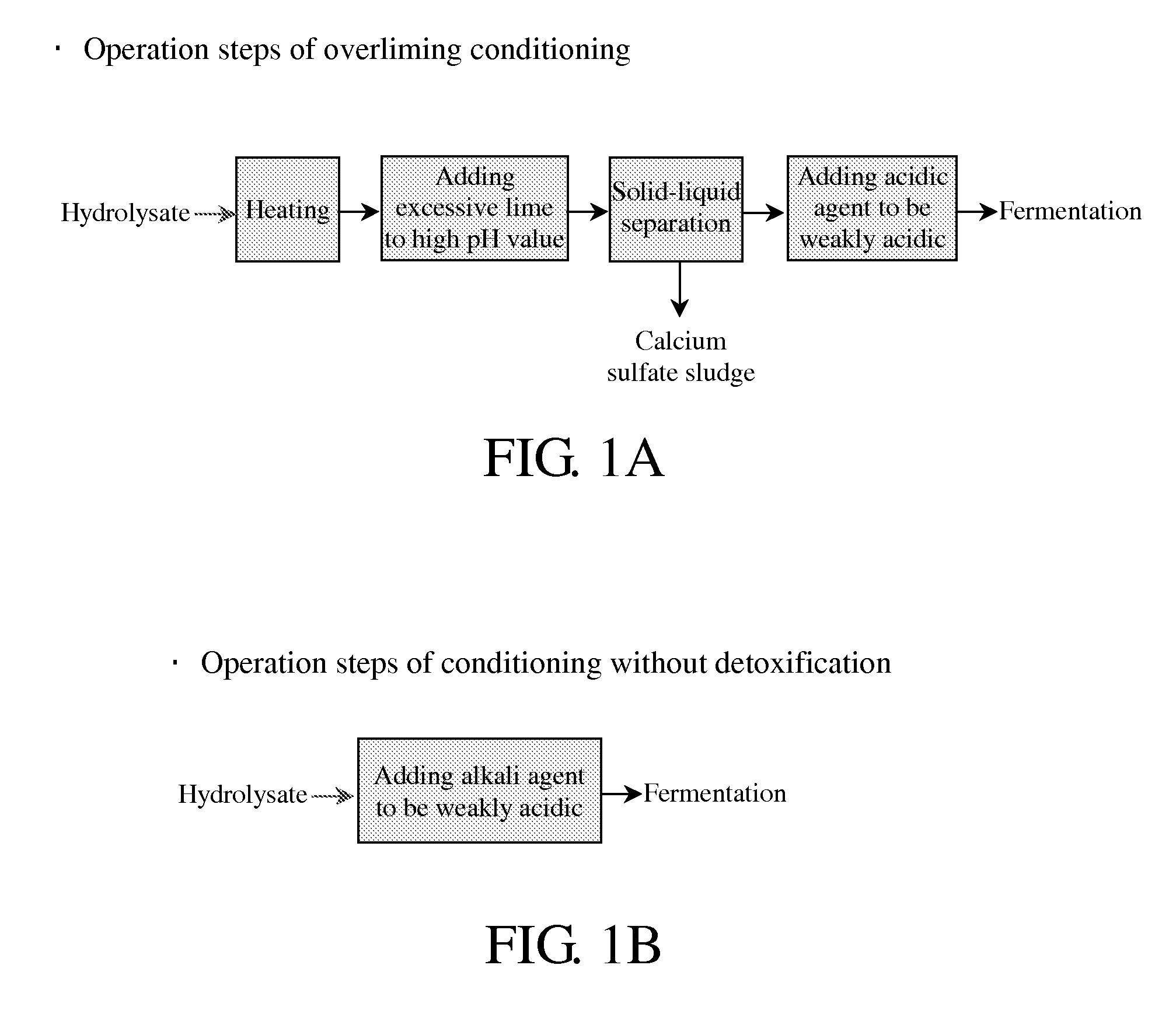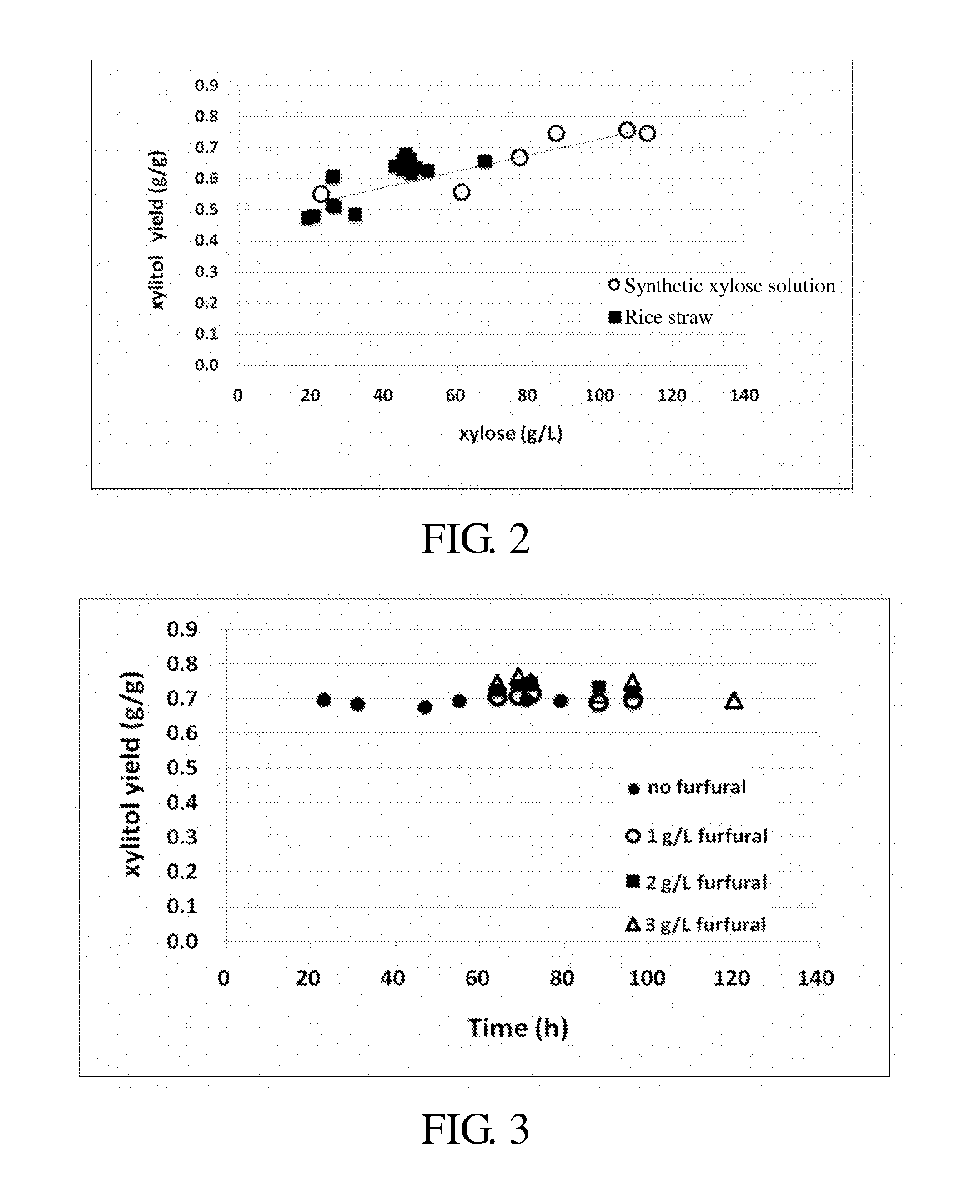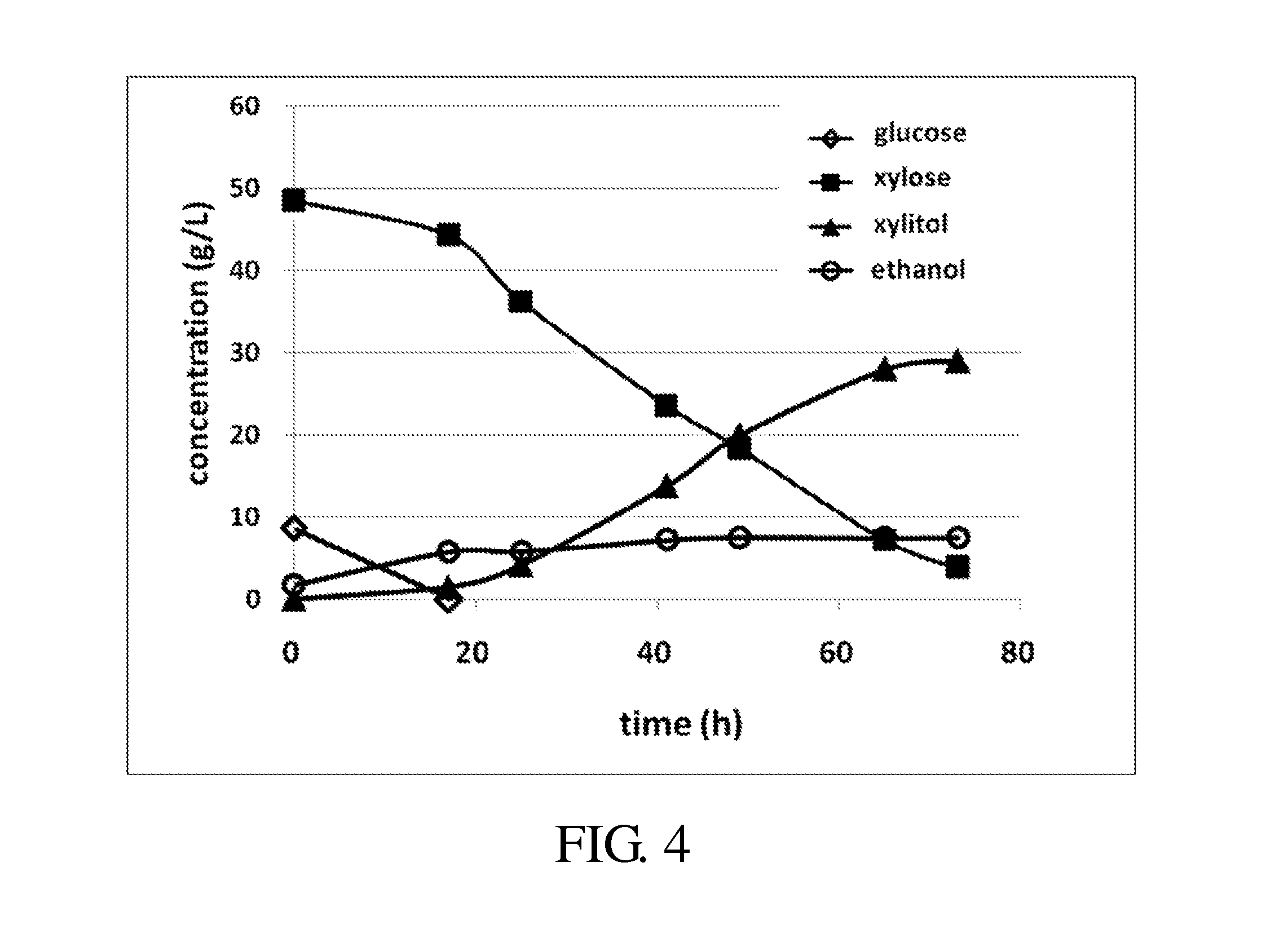Method for producing xylitol from lignocellulosic hydrolysates without detoxification
a technology of lignocellulosic hydrolysate and xylitol, which is applied in the direction of fertilization, etc., can solve the problems of high equipment cost, complex production process of chemical synthesis, and relative difficulty in separation, and achieve high tolerance
- Summary
- Abstract
- Description
- Claims
- Application Information
AI Technical Summary
Benefits of technology
Problems solved by technology
Method used
Image
Examples
Embodiment Construction
[0018]The features and implementation of the present invention are described in detail with preferred embodiments below.
[0019]I Results of Xylitol Production by Fermentation of Xylose Solution with Candida sp.
[0020]The xylitol production from xylose fermentation by Candida sp. strain is investigated by a synthetic xylose solution (YPX, medium of yeast extract, peptone and xylose), and the production of xylitol by the yeast strain under different initial xylose concentrations is performed in a 250 mL flask containing 50 mL of fermentation medium. The fermentation parameters are controlled, such that the temperature is 30° C., the agitation of the fermentation is 100 rpm, and the ratio of the inocula size of the culture and the volume of the fermentation medium is 1:6 (v / v). The results are shown in FIG. 2. The initial xylose concentration in the fermentation medium will determine the final yield for xylitol production. As the initial xylose concentration is increased, the xylitol yie...
PUM
 Login to View More
Login to View More Abstract
Description
Claims
Application Information
 Login to View More
Login to View More - R&D
- Intellectual Property
- Life Sciences
- Materials
- Tech Scout
- Unparalleled Data Quality
- Higher Quality Content
- 60% Fewer Hallucinations
Browse by: Latest US Patents, China's latest patents, Technical Efficacy Thesaurus, Application Domain, Technology Topic, Popular Technical Reports.
© 2025 PatSnap. All rights reserved.Legal|Privacy policy|Modern Slavery Act Transparency Statement|Sitemap|About US| Contact US: help@patsnap.com



